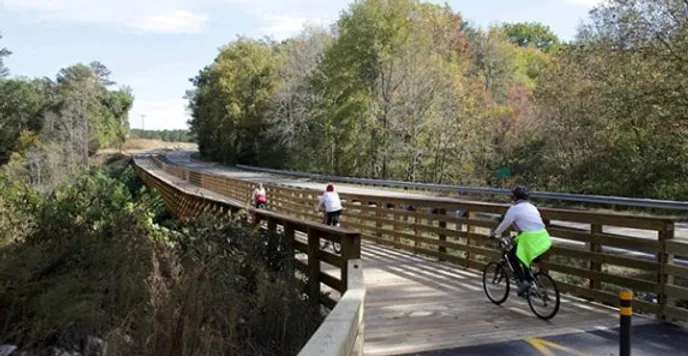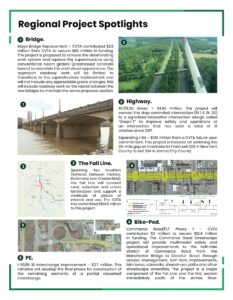Central Virginia Transportation Authority: Regional Collaboration Personified

For more than a half century, government officials from throughout Central Virginia have worked collaboratively on helping address regional challenges, and chief among them have been those related to transportation. When PlanRVA (formerly the Richmond Region Planning District Commission) was established in 1969, the legislation called for local officials to work voluntary together through the organization to find mutually beneficial solutions to growing transportation demands – highways and bridges, public transportation, even the accelerating needs of the Port of Richmond. For a region whose population would double over the next 54 years, a collective focus on the area’s transportation became an important priority.
That spirit of cooperation is alive today more than ever, thanks in large part to the creation in 2020 of the Central Virginia Transportation Authority (CVTA), an organization that not only provides vision and analysis related to the region’s far-reaching transportation needs but, importantly, also serves as a means for attracting and raising the necessary funding that makes ambitious transportation projects a reality.
Chet Parsons, the newly appointed (and first-ever) executive director of the CVTA, credits the structure of the Authority for enabling and fortifying the collaboration that lies at the foundation of its work.
“CVTA is structured to be very streamlined and functional as the Authority itself is primarily made up of elected officials from each of the member jurisdictions,” he says. “Then there are non-voting members from all of the major transportation partners, whether that’s the Commonwealth Transportation Board, Virginia Department of Transportation, Department of Rail and Public Transportation, public transit, the airport or the port. We’re set up to be able to make decisions and move quickly.”
Leadership of the Authority is selected through an annual vote. In July 2023, Richmond Mayor Levar Stoney and Ashland Mayor John H. Hodges were elected chair and vice chair, respectively.
Operationally, the organization works through two primary advisory committees – the Technical Advisory Committee, which provides guidance and recommendations on new projects, and the Finance Committee, which advises CVTA on financial matters.
To help assess regional needs and determine priorities in an analytical way, the Technical Advisory Committee created a Regional Project Selection and Allocation Framework – a localized version of the Smart Scale program employed by the commonwealth – that helps define what a regionally significant project is based on accepted criteria (e.g., meeting an average daily traffic threshold, connecting multiple jurisdictions, improving safety conditions, or a variety of other measures). Each project application is scored, which gives Authority members a data-driven metric – consistent with the planning tool developed by the Richmond Regional Transportation Planning Organization – by which to make decisions. It shows clearly how one project stacks up against another.

Regional projects highlighted in the 2022 CVTA annual report. Click to view enhanced image.
“We’ve done two rounds of regional funding, and it’s worked very well,” Parsons says. “I’m really proud of how the Authority has functioned, and Ithink all of the elected officials are aware of the need to cooperate as a region. That’s part of the reason the Authority was created as there was a recognition that we were losing to Northern Virginia and Hampton Roads in terms of receiving state and federal dollars. The Authority has really given us a tool to compete on a statewide and national scale, and that’s the mindset that the elected officials have taken. It’s not about Chesterfield competing with Henrico anymore. Today, it’s about Chesterfield and Henrico competing with Alexandria or Suffolk or even Oregon. It’s about making a case on a national level that Central Virginia stands on its own.”
A great diversity of projects has already received hundreds of millions of dollars in funding through the Authority – from the widening of 29 miles of the I-64 Innovation Corridor in New Kent County, to the continued expansion of the Fall Line Trail to safety improvements to Rt 288 between Goochland and Powhatan Counties. To date, 45 projects totaling $474.5 million have been supported by CVTA funding.
“For the third round, we’ll see a number of major improvements to continue,” Parsons says. “I know that there’s lots of great ideas and concepts that the localities are coming up with to keep this region on the cutting edge, so I’m excited.”

